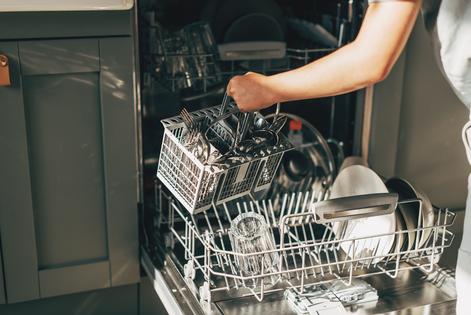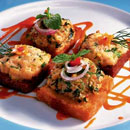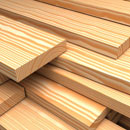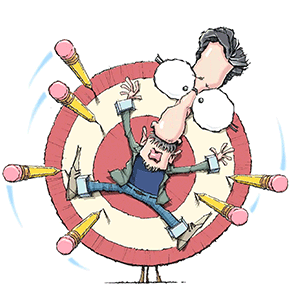6 things you should be doing to help your dishwasher clean better
Among all modern-day appliances, the dishwasher stands out as one of the most convenient inventions. It effectively handles the tedious task of scrubbing and cleaning dozens of dirty dishes daily, freeing you from the labor of handwashing. But while the dishwasher does the bulk of the work, you still have a role to play.
There are several important steps to take — some each time you load the dishwasher, and others only occasionally — to ensure your dishes come out as clean as possible.
1. Clean the dishwasher regularly
Cleaning the dishwasher is a necessary task. But are you doing it correctly — and, if so, often enough? “Run an empty cycle with a dishwasher cleaner monthly to ensure your machine stays clean, which will, in turn, help it clean dishes more efficiently,” advises Morgan Eberhard, senior scientist for Cascade, If you don’t have a commercial cleaner on hand, pour distilled white vinegar into a dishwasher-safe cup, place it on the top rack, and then run an empty load.
An often-overlooked area of the dishwasher that needs cleaning is the filter. “Over time, the filter can accumulate food particles that can affect the efficiency of the dishwasher, so make sure to clean it regularly,” Eberhard says. Other spots to pay attention to: the drain, spray arms, and the bottom of the appliance.
2. Load dishes correctly
Loading dishes the right way can not only help your dishwasher clean better, but it can also save you the headache of having to play Tetris on a daily basis. Eberhard shares these key points to remember.
Bottom rack: “Load the bottom rack facing down or toward the center,” she suggests. “Put plates and messy, burnt-on pots and pans on the bottom rack facing the water source.” Since the source is usually found in the center, you want to create a clear path and steer clear of stacking dirty dishes on top of one another.
Top rack: Per Eberhard, “Ensure cups, mugs and bowls are face down on the top rack so they’ll get cleaned better and won’t collect water, which can leave behind unsightly deposits.”
Plasticware: Eberhard says anything made of plastic should only go on the top rack. “Temperatures typically remain cooler on the top rack, which will prevent plastic from melting,” she explains.
Silverware: “You don’t want your spoons to spoon, so carefully load utensils to prevent nesting and distribute them evenly in the cutlery compartments,” Eberhard says. She also recommends loading silverware downwards, especially if they have sharp ends.
Lastly, even if you’re used to loading it correctly, do not overcrowd the dishwasher. Doing so prevents the water and detergent from circulating properly.
3. Use a quality dish detergent (and use the dispenser)
The type of dish detergent you use should be high-quality and suitable for your appliance, as well as the type of water you have (more on that later). While it’s unnecessary, using a rinse aid may help reduce water spots on dishes.
Eberhard stresses the importance of using the designated detergent dispenser. She explains that most dishwasher models use a pre-wash at the start of the cycle, ahead of the cleaning phase. “If you toss your detergent pod in the bottom of the machine or the cutlery basket, it will dissolve during this portion of the cycle and get washed away in the first 10 to 20 minutes.” You’ll get the best cleaning using the dispenser, so it’s released at the right time during the cycle.
4. Choose an appropriate dishwasher setting
We get it; the number of dishwasher settings can be just as overwhelming as the ones on your washer and dryer. But it’s essential to familiarize yourself with them because using the wrong one can be detrimental to your dishes. Not to mention, it prevents a good clean.
Once you’ve gotten comfortable with which setting to use for which kind of dishware, consider enabling the heat dry option, which can take cleanliness a step further. Note that you should steer clear of using it for plasticware, wooden utensils, or cutting boards, fine china and other fragile items (instead, try using the air-dry setting with these!).
5. Check water temperature and softness level
The different dishwasher cycles use varying levels of water temperature, but all should be hot, with 120 degrees Fahrenheit as the standard minimum. Running the kitchen sink until the water is hot before starting the dishwasher can help ensure the initial water filling is warm enough.
Depending on where you live, you’ll either have soft or hard water in your home. Make sure to use a dish detergent that is formulated for the kind you have.
6. Maintain the condition of the dishwasher
“Just like any machine or appliance, your dishwasher needs some regular maintenance to keep it working in tip-top shape,” Eberhard says. Address any issues immediately and occasionally check the door seals, as they’re often the reason for a leak, which, in turn, can reduce water pressure during a cycle. Ensuring that the dishwasher is performing well will go a long way in determining how clean your dishes are after each load.
Will pre-rinsing dishes help?
The age-old dishwasher debate: to rinse or not to rinse? While yes, you should always take a moment to scrape off large food particles before loading a plate into the dishwasher (because they can easily clog the filter), rinsing it off is not usually necessary.
(Better Homes and Gardens is a magazine and website devoted to ideas and improvement projects for your home and garden, plus recipes and entertaining ideas. Online at www.bhg.com.)
©2025 Dotdash Meredith. All rights reserved. Used with permission. Distributed by Tribune Content Agency, LLC.






























Comments